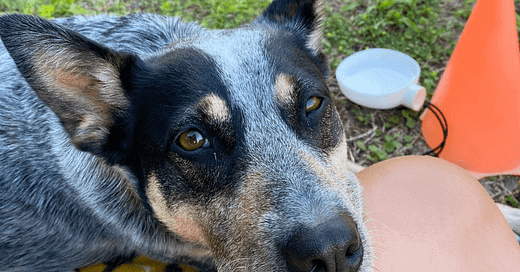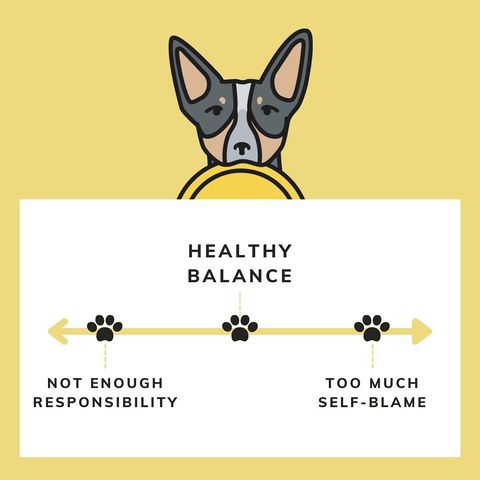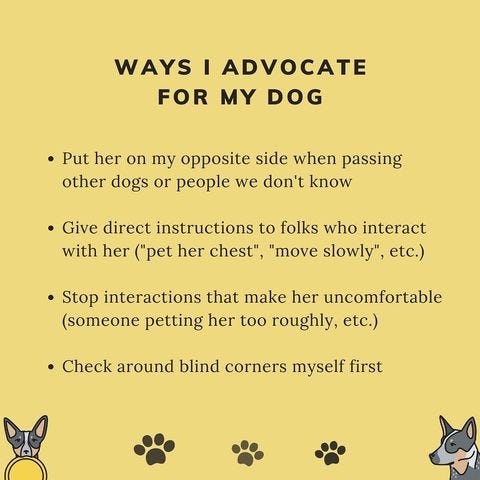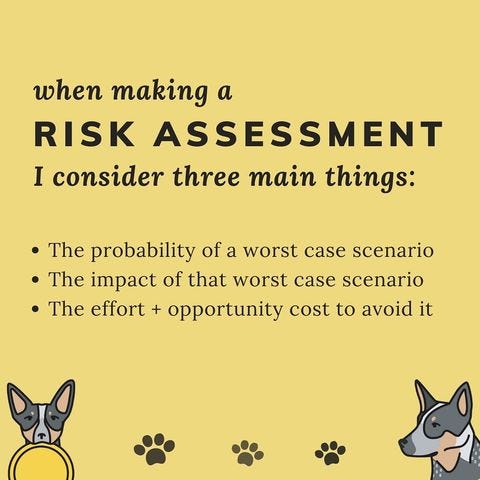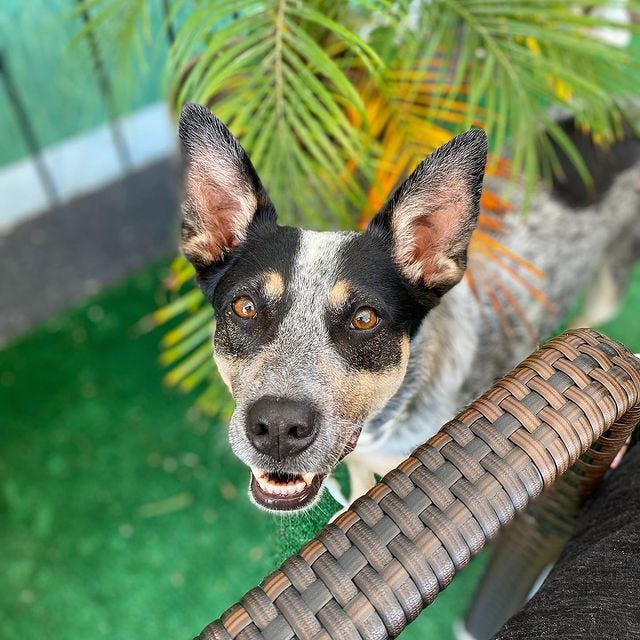The line between “advocating for” and “babying” my dog
When Scout and I are hanging out in public and another dog passes in close proximity, I often stand up and put myself between them.
I hesitated to do this for a long time. It had been drilled into my head that I shouldn’t make a big deal of things she was afraid of. I’d only make it worse by acting. And there’s some truth in that! Our dogs do feed off of our subtle signals, and sometimes it’s best to stay still.
At the same time? It’s also important to advocate for my companion. To let Scout know that while I myself am not afraid of another dog—and she doesn’t need to be either—I still have her back and will protect her space.
So I wrestled with the balance of telling her both
“I’m not worried about that thing, so you don’t need to be worried”
and also “but I see that you’re concerned and will keep you safe”.
It’s still not a perfect process, but here’s how I’ve come to approach these decisions over time. I don’t believe “advocating for” is synonymous with “babying” our dogs!
(Background context: You can read more about Scout’s fear of other dogs here and why I’m passionate about advocacy in general here.)
Discomfort is inevitable in our lives
First things first: Sometimes life is hard. Full stop, end of story, no matter what kind of creature you are. No one gets to live in a bubble of perfect comfort.
If we try to prevent our dogs from ever feeling anything negative, we’re automatically setting ourselves up for failure. (You can read more of my thoughts on that in the below Instagram post.) We’re also hindering their opportunities for growth, since the best learning actually requires some stress.
It’s important to me that my dog can reasonably handle pressure
In our typical environments, my dog and I have to handle:
Passing other people and dogs in close proximity
Startling noises like cars backfiring, things blowing in the breeze, and dogs barking from their yards
Frightening weather like rain, strong winds, or big waves at the beach
Vet visits (more often now that she has seizures)
To thrive in our modern human world, Scout needs to be resilient. I prioritize her ability to work through discomfort and come out stronger on the other side!
There’s also a lot I can do to make my dog feel safer with me
While I can’t protect Scout from every remotely stressful situation in the world, I can take reasonable steps to help her feel mentally and emotionally secure.
I’m not going to lock ourselves inside the house or massively restructure our life. I’m not going to walk on eggshells in every new environment. What I am going to do?
Practice my ability to guide my dog through difficult moments.
Ultimately build a strong, trusting relationship!
We can be there for our dogs without unnecessarily sheltering them
Like most things, I’ve realized that balancing our dogs’ experiences out in public is not black and white: “Don’t freak out at things your dog is afraid of” is good advice. “Advocate for your dog’s space” is also good advice.
How we strike this balance in our life:
If the stimulus is something I know Scout is quite afraid of, I err on the side of showing her I have her back. She’s already scared, so I’m not worried about drawing her attention to the situation if I’m simultaneously showing her I’m taking care of it.
If I think the stimulus might actually approach us (other dog owners often walk their dogs right up to “say hi”), I err on the side of advocacy. I’d always rather be standing up ready to intervene but not actually need to than be caught off guard without time to step in!
If it’s something Scout is just a bit uneasy around, I usually pay it no mind and help her (verbal guidance, asking for obedience, making space, etc) only if needed. This worked well for things like her nervousness around loud strangers and bikes and landscaping equipment.
A few specific examples:
If another dog passes nearby, I stand up or otherwise prepare to intervene, especially if we are sitting still ourselves. Scout can easily feel trapped in these situations.
We communicate our needs with other owners as early as possible—”could you help us make some space” “she’s afraid” “can you call / leash your dog” and so on.
We let strangers come up to us. I make sure to interact with them happily! But we never force our dog to be touched if she doesn’t show interest.
If we see something novel that freaks Scout out a little (like a robotic lawn mower, which we’ve started to encounter in a nearby neighborhood) we just keep moving. She can investigate at her own pace if she wants.
If it starts to rain or gets really windy, we play and don’t immediately hide from the weather. Same if we’re taken aback by a loud noise.
And so on.
You can read more about how I make risk assessments with my dog in this article.


